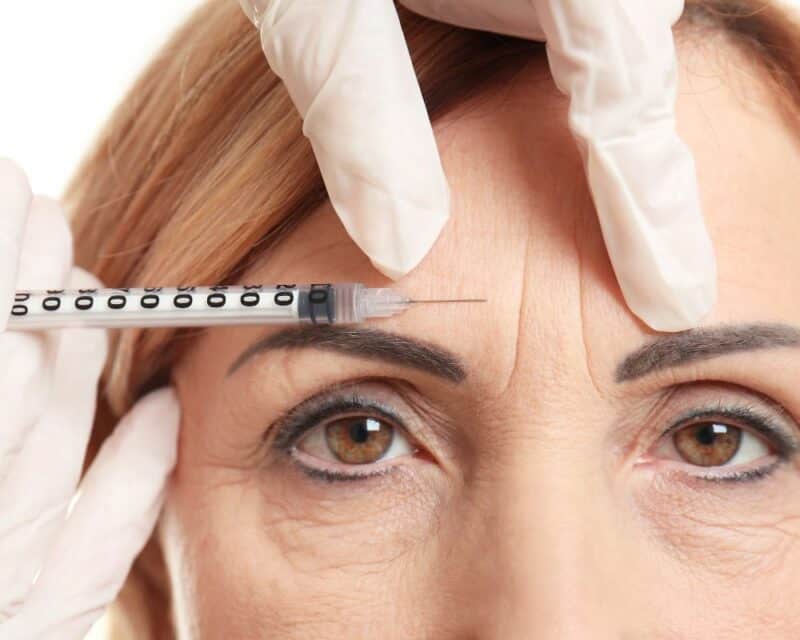Key Takeaways:
- Detailed overview of Botox’s medical and cosmetic uses, including its mechanism of action.
- Practical advice for choosing a qualified provider and preparing for treatment.
- Information on long-term safety, cost considerations, and society’s changing perception of Botox.
What Is Botox and How Does It Work?

A neurotoxin produced by the naturally occurring bacterium Clostridium botulinum is the basis for the drug Botox, which is famously associated with youthful beauty. While its cosmetic applications for minimizing fine lines and wrinkles are celebrated across demographics, Botox’s scientific narrative speaks to more complex and nuanced functionality. It temporarily paralyzes muscles into a state of relaxation, halting the overactive muscle contractions that contribute to the formation of dynamic wrinkles and certain medical disorders. This pharmacological action is underpinned by Botox’s ability to inhibit acetylcholine, a neurotransmitter at the neuromuscular junction that typically prompts muscles to contract.
The prospect of injectables can prompt excitement and apprehension, but understanding Botox’s efficacy and target specificity can assuage concerns. Botox’s controlled blockade is selective and dose-dependent, making it an exact modality in both cosmetic and therapeutic realms when in the hands of seasoned professionals. The decorative allure of Botox, once reserved for the elite echelons, has now become accessible to a broader audience, reflecting inclusivity in modern aesthetic practices. Rapid City residents considering this treatment are fortunate to have access to skilled providers. Rapid City Botox services are opening doors to the manifold advantages of this modern-day fountain of youth.
The Therapeutic Applications of Botox
Botox’s spectrum of applications transcends the confines of aesthetic medicine, venturing successfully into the therapeutic domain. Approved by regulatory bodies for an array of medical conditions, Botox provides relief from chronic migraine, which impacts millions worldwide, by desensitizing pain pathways implicated in the headache cycle. It’s even deployed in managing spasticity—a condition associated with an abnormal increase in muscle tone or stiffness, significantly affecting movement. The muscle-relaxing effect of Botox reduces the spasms, thereby improving the patient’s quality of life. Other notable therapeutic uses include:
- Treating overactive bladder symptoms.
- Preventing excessive sweating in hyperhidrosis.
- Mitigating the effects of eye conditions such as strabismus. It’s
It is insightful to examine how Botox impacts chronic migraine sufferers. Botox can reclaim hours and days for individuals otherwise debilitated by this condition by diminishing the frequency and severity of headache episodes. The nuanced application across a range of muscles in the head and neck demonstrates sophistication in utilizing Botox as a therapeutic agent. Understanding this versatile drug’s role in mitigating suffering and restoring functionality underscores the importance of ongoing research and clinical practice evolution. One can further explore the therapeutic potential of Botox and its transformative effects by reviewing the latest research on its use in treating various conditions.
Botox in Cosmetic Surgery: Enhancing Natural Beauty
The cosmetic application of Botox has long been associated with a visage free from the tell-tale signs of aging. It serves those seeking to diminish the dynamic lines that emerge from years of expressive movements, such as smiling or frowning. Administered with a keen eye for balance and symmetry, Botox can gracefully smooth out crow’s feet, forehead furrows, and glabellar lines, reinforcing one’s innate beauty without requiring invasive surgery. The beauty of Botox lies in its reversibility and the option for subtle modification over time, allowing for a dynamic approach to aesthetic aging.
Reflective of broader sociocultural trends and shifting beauty standards, Botox’s popularity is evidence of society’s growing acceptance of cosmetic interventions as part of a holistic approach to self-care. The inclusivity and appeal of these treatments are highlighted by the diverse demographics engaging with Botox. The trend toward preventive measures is gaining traction as individuals in their twenties and thirties are increasingly opting for Botox, not to correct, but to prevent the early signs of aging. This proactive approach indicates increased consumer sophistication and a broader understanding of Botox’s capabilities.
Choosing the Right Professional for Botox Treatments

In injectable treatments, the practitioner’s proficiency is paramount, with the selection of a provider being a significant contributor to the success of Botox therapies. An ideal Botox clinician melds medical accreditation with an artistic sensibility, understanding the subtleties of facial anatomy down to the minutest muscle movement. It necessitates a pursuit of excellence through education and skill refinement, staying abreast of advances in technique and safety measures. The decision of where and from whom to receive Botox injections can influence the outcome and the entire treatment experience.
Individuals interested in Botox should do their due diligence:
- Verify the provider’s credentials.
- Review their portfolio of work.
- Consult previous clients when possible.
These steps, combined with an in-depth consultation and frank communication of expectations and concerns, lay the groundwork for a trusting and successful patient-practitioner relationship. This level of discourse and transparency can help the patient navigate the myriad options and tailored Botox treatment plans.
Preparing for Your First Botox Session
Entering the world of Botox treatments calls for preparation and informed anticipation. Patients are typically counseled to avoid substances that could exacerbate bruising or bleeding at the injection site for a period leading up to the appointment. Clear communication regarding medical history and current medications is crucial for patient safety and personalizing treatment plans. A satisfying artistic journey can be set in motion, and any unanswered questions or concerns can be addressed during the initial consultation.
Post-treatment, there are several foundational aftercare instructions to follow for optimal results. These include refraining from touching the treated areas to avoid spreading the Botox to adjacent muscles, abstaining from strenuous activities for a short period to prevent inflammation, and keeping upright for a few hours to ensure the product remains localized. The success and level of satisfaction with Botox injections can be significantly affected by paying close attention to these details.
Long-Term Effects and Safety of Botox
The safety profile of Botox, mainly when utilized within the established guidelines, is generally well documented and supported by decades of clinical use. Most side effects are localized to the injection site and are short-lived, resolving without intervention. The non-permanent nature of Botox offers reassurance to those wary of committing to irreversible change. This characteristic and a history of positive outcomes underlines the drug’s commendable safety record.
As Botox treatments are often sought recurrently, questions about long-term effects naturally arise. Studies have shown the continued efficacy and safety of Botox over long periods when administered by a qualified professional following standardized protocols. Adherence to these protocols, along with informed consent about the potential for side effects, maintains the integrity of Botox as a safe and reliable option in both cosmetic and medical treatments.
Botox Alternatives and Future Developments
While Botox is a mainstay in both the cosmetic and therapeutic arenas, it stands among a suite of options catering to diverse preferences and needs. Alternatives like dermal fillers address volume loss, whereas chemical peels and laser therapies offer solutions for skin texture and quality concerns. The dynamic field of aesthetic medicine is poised for further innovation, with new technologies and products expanding the repertoire of non-invasive treatments available to consumers.
The ongoing development of Botox and its alternatives signifies a responsive industry attuned to its clientele’s evolving desires and values. Future advancements may yield novel applications, enhanced precision, and even more tailored approaches to aesthetic and therapeutic interventions. The commitment of medical science to continuous improvement ensures that the horizon of options will broaden, engendering new choices and treatment pathways for patients worldwide.
Debunking Common Botox Myths
The landscape of popular beliefs surrounding Botox is riddled with misconceptions, from the idea of it being only for celebrities to fears about its long-term effects. Prominent among these is the myth of Botox resulting in an expressionless or ‘frozen’ face—a portrayal often dispelled upon witnessing the natural, refreshed appearance of those who have received treatments administered with expertise and restraint.
Education plays an invaluable role in separating fact from fiction. By illuminating the science behind these procedures, we sweep away unfounded fears and open the door to informed decision-making. Opting for Botox should be an empowered choice, underpinned by a solid understanding of the procedure and realistic expectations of the results. Dispelling myths helps potential patients and elevates the discourse around aesthetic procedures, grounding them in reality versus rumor.
The Cost of Botox: Investment vs. Result

The financial aspect of Botox can be a deciding factor for many, yet when balanced against the benefits and potential to enhance the quality of life, the expenditure may be seen as justifiable. Considering the investment in one’s self-image and well-being, the costs associated with Botox can be framed as more than just a price tag—it’s about valuing personal satisfaction and confidence.
Healthcare spending, particularly in the elective realm, often involves a nuanced assessment of cost versus reward. Prospective Botox patients should candidly talk with their providers about the treatment’s expense, exploring package deals or loyalty programs that may offer value over time. Insurance coverage varies by case, particularly for therapeutic applications, warranting a thorough investigation into potential financial support options.
Personal and Societal Perceptions of Botox
Change is the only constant, and this holds for the evolving societal perception of Botox. What was once whispered about is now openly discussed, a reflection of the increased normalization of cosmetic treatments. The dialogue surrounding Botox is enriched by the stories of those who have embraced the therapy and the conspicuous shift towards self-care and autonomy in health and beauty decisions.
The personal accounts and visible outcomes of individuals who have undergone Botox treatments contribute significantly to demystifying the process and refuting outdated stigmas. As modern narratives about Botox grow more inclusive and assertive, they pave the way for broader acceptance and respect for every person’s right to choose their own body and appearance regarding their health and happiness.
